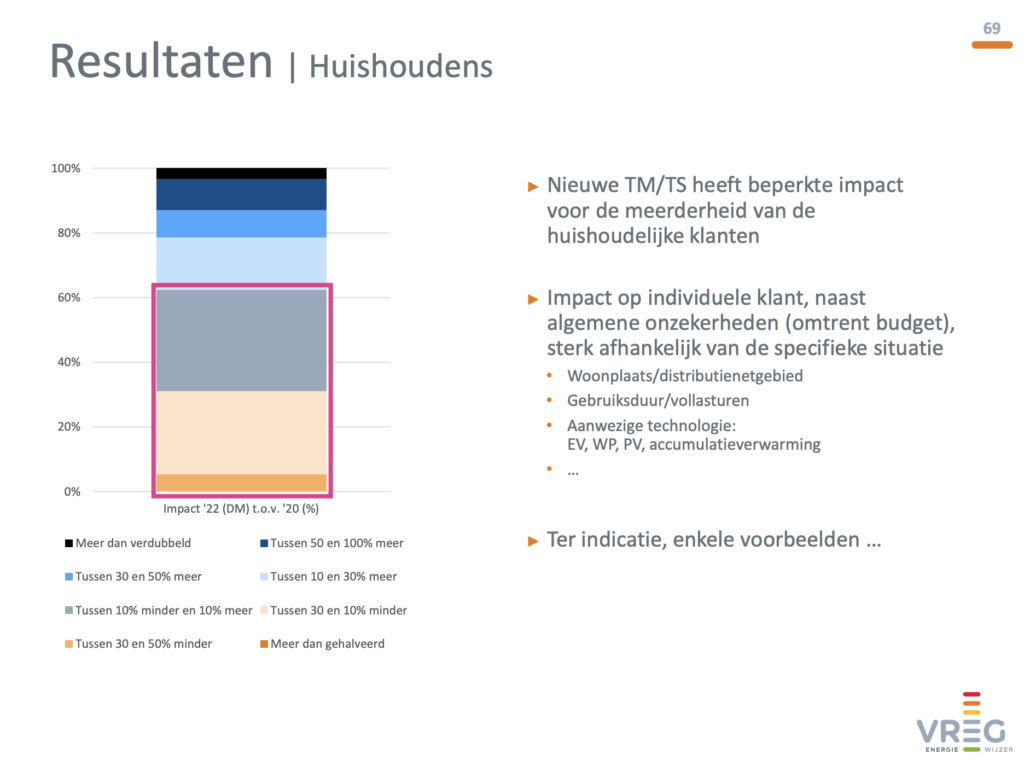What is the capacity tariff? How does it work?
Today, we pay the grid operator for the distribution of electricity based on the consumed kWh from the grid. The more you consume in terms of volume annually, the more you pay. Currently, there is no consideration for your peak consumption, although it is essential for the grid operator to control total consumption during peak periods. Distribution rate tariffs are determined for a period of 4 years, and from 2022, it was possible to review the tariff methodology. Therefore, in 2023, the pure distribution cost will be replaced by a new system based on the maximum peak consumption (quarter-hour average) calculated for each month. So, if you have one peak per year, you will only see an increase in that particular month. The average of these 12 monthly peaks is then used in your final bill. A minimum peak consumption of 2,500W will be charged anyway, even for those who consume less than the minimum cost. Those who cook, iron, or vacuum with electricity will quickly reach these power levels. Those who drive electrically and want to comfortably charge their electric vehicle will reach a peak of 7.4kW or even 11kW for those with 3 phases. The average Flemish resident without an electric vehicle has a peak consumption of 3.15kW.
For clarification, part of the distribution tariffs will still be charged based on our annual consumption in €/kWh, such as public service obligations, surcharges, and the like.
Impact on the Bill?
Several simulations have already been carried out by the Flemish Energy Regulator VREG. In short, those who consume a lot of electricity annually (> 6,000 kWh) but have a low peak consumption will pay less. Those who consume less (<3,500 kWh) but have high peaks will pay more. The positive aspect of all this is that many households will shift towards more conscious usage to avoid aligning major consumers at the same time. Unfortunately, the system does not take into account the timing of peak consumption.
A charging station is a major consumer and will largely determine the peak of your home. Everyone wants to optimize their energy bill, so charging at 11 or 7.4 kW (50 km/h) is convenient but more expensive than charging slowly. If you want to save on your energy bill, you will charge at around 5 kW (25 km/h) and save about €200 per year. Everyone will have to decide for themselves whether they are willing to sacrifice charging speed and comfort for a €200 saving.

Impact on the Fleet Market
- Smart Charging Becomes the Norm
Opting for a smart charging station will prevent your vehicle’s peak consumption from coinciding with your home’s, and the additional cost (approximately €495) will be recouped in just 1 to 2 years. Those concerned about their costs will invest in a smart charging station with load balancing. Brands like Alfen, Easee, Smappee, and Zappi charging stations can be equipped with this feature. Stroohm currently installs a smart charging station in almost 80% of cases. This number will increase significantly and require more expertise from installers in terms of programming and knowledge of the energy market. - Introduction of Home Batteries
Those who want to charge faster because they drive many kilometers daily can install a battery. Throughout the day, you can charge your battery with low consumption from the distribution network. Later, your vehicle can charge quickly using the battery during peak times. In the future, more car manufacturers and independent parties will provide this service, which will become an integral part of solar panels for optimal energy supply to your fleet. - Impact on Home Charging Reimbursement
The reimbursement of the electricity tariff will become more complex, requiring a well-founded discussion with employees, works councils, and unions. Who pays the cost to charge faster at home? What part is purely private, and what part is for the employer? Energy prices reflect shortages and surpluses in the energy market. Since 2021, thanks to smart meters, energy suppliers have had the ability to charge us energy rates that vary throughout the day. Today, we have a fixed rate per month, regardless of the time of consumption. Suppose we can charge at a 20% or 30% discount during the night. In that case, it will convince us to charge faster. I don’t think so because, in any case, after fifteen minutes of higher charging speed, your fixed costs for the entire month increase. It remains to be seen whether you will recoup that cost. The capacity tariff will deter consumers from quickly responding to the grid’s balancing needs during off-peak moments.
